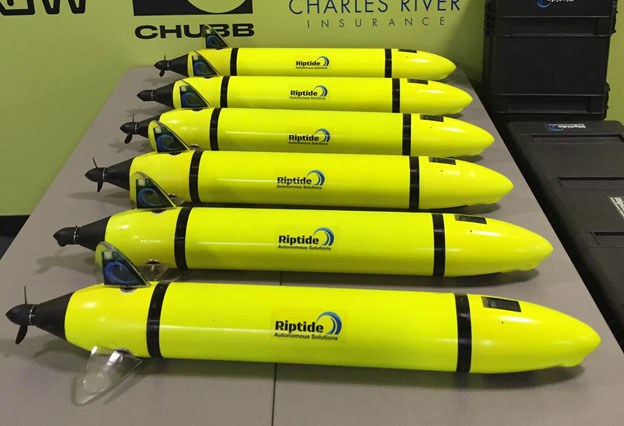Micro-UUV

Riptide Ships Six Unmanned Underwater Vehicles to the U.S. Navy
18 August 2016 - Riptide Autonomous Solutions has shipped six Micro-UUVs to the US Navy. The unmanned undersea vehicles are configured with a dry payload volume that will enable rapid payload development and demonstration and allow the Navy to test various new sensor systems with these small flexible vehicles.

“This is another exciting milestone for Riptide as we increase the number of micro-UUVs in the field and work with our customers to learn valuable operational lessons which we then fold back into future variants of this rapidly adaptable, exciting class of vehicle. We are very excited by the feedback we are receiving on our product and the growing interest,” said Jeff Smith, Riptide’s President.
Riptide’s micro-UUV has been developed using a large quantity of 3D printing which has enabled affordably and quickly assessing and evaluating numerous design considerations. This rapid manufacturing capability has also enabled Riptide to quickly field these production vehicles. Sam Godin, Riptide’s lead mechanical engineer, stated “The use of 3D printing enabled us to conduct in-water testing of our first hulls within a few shorts months of starting the design. Complex geometries such as the vehicle’s nose, tail section, fins and propeller were built using the latest technology in 3D printing. These are not just engineering models. We are delivering product capable of withstanding the pressures and harsh environment that these vehicles operate in that were built quickly and affordably with the latest 3D printing techniques.”
“The vehicle was designed for low logistics. The configuration delivered uses 144 alkaline AA batteries just like in your television remote control but in greater quantity. They can be swapped out in a few minutes. The use of alkaline batteries avoids many of the limitations and restrictions with shipping, safety, and government certification of lithium batteries, while providing enough energy to run these efficient vehicles for a day or more, depending on operational speed and payload power. Plus, you can get them anywhere in the world,” said Smith. “And with a vehicle as small as this, you don’t need to rely on large, expensive surface craft to operate them. In addition to typical surface craft, we’ve run them from the dock, from dinghies, and even from paddleboards.”